
The oldest royal palace still in use in Europe is located in Seville and has rightfully become, thanks to its rich history, one of the most visited places in all of Spain. We are talking about the Royal Alcázar of Seville.
This monument, declared a World Heritage Site by UNESCO in 1977, is one of the most beautiful places in all of Seville. You should visit the Royal Alcázar of Seville without haste, with the sole purpose of enjoying all its secrets and stories.
To make the most of your visit to Seville without worries, we recommend hiring a car at Malaga Airport without a credit card. That way, the only thing that matters will be enjoying the journey, the company, and the destination.
Table of Contents
History of the Alcázar of Seville
When we talk about the Royal Alcázar of Seville, we must think of a complex rather than a single building. Within its walls, there is a large collection of gardens and palaces that make up what we know as the Royal Alcázar of Seville.
Its origins date back to an 11th-century Muslim fortress. It underwent its first major reconstruction in the 14th century under King Peter I, known as “the Cruel,” who converted it into a royal residence. Each new modification added another style to its eclectic nature.
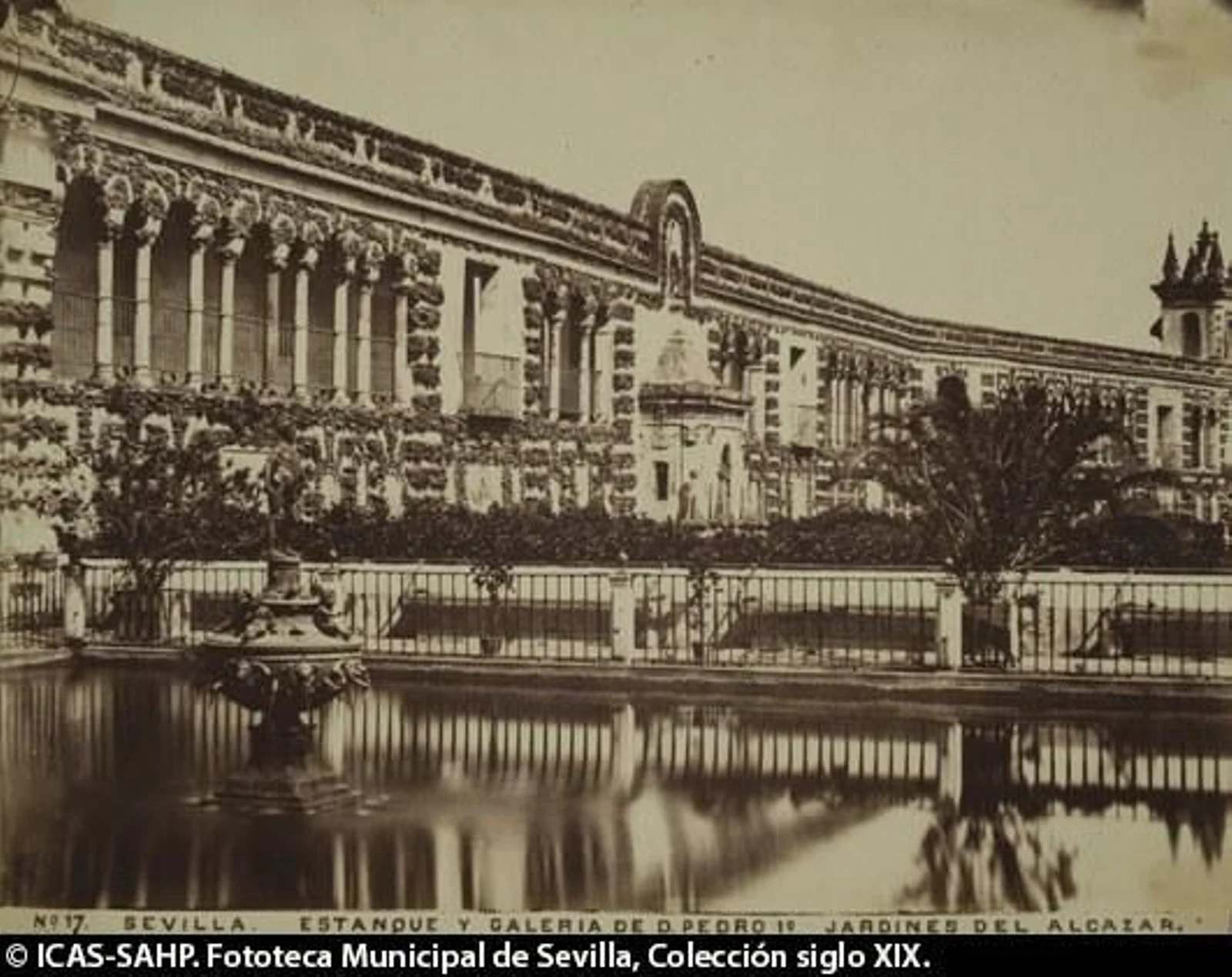
Over time, the Royal Alcázar of Seville became the perfect example of cultural fusion and how different architectural styles and tastes can coexist and endure through the centuries.
Among its palaces and halls, highlights include the Patio de las Doncellas, with its fountains and pool, the Hall of Ambassadors, known for its dome, the Palace of Peter I, with its strong Mudejar style, and the Gothic Palace.
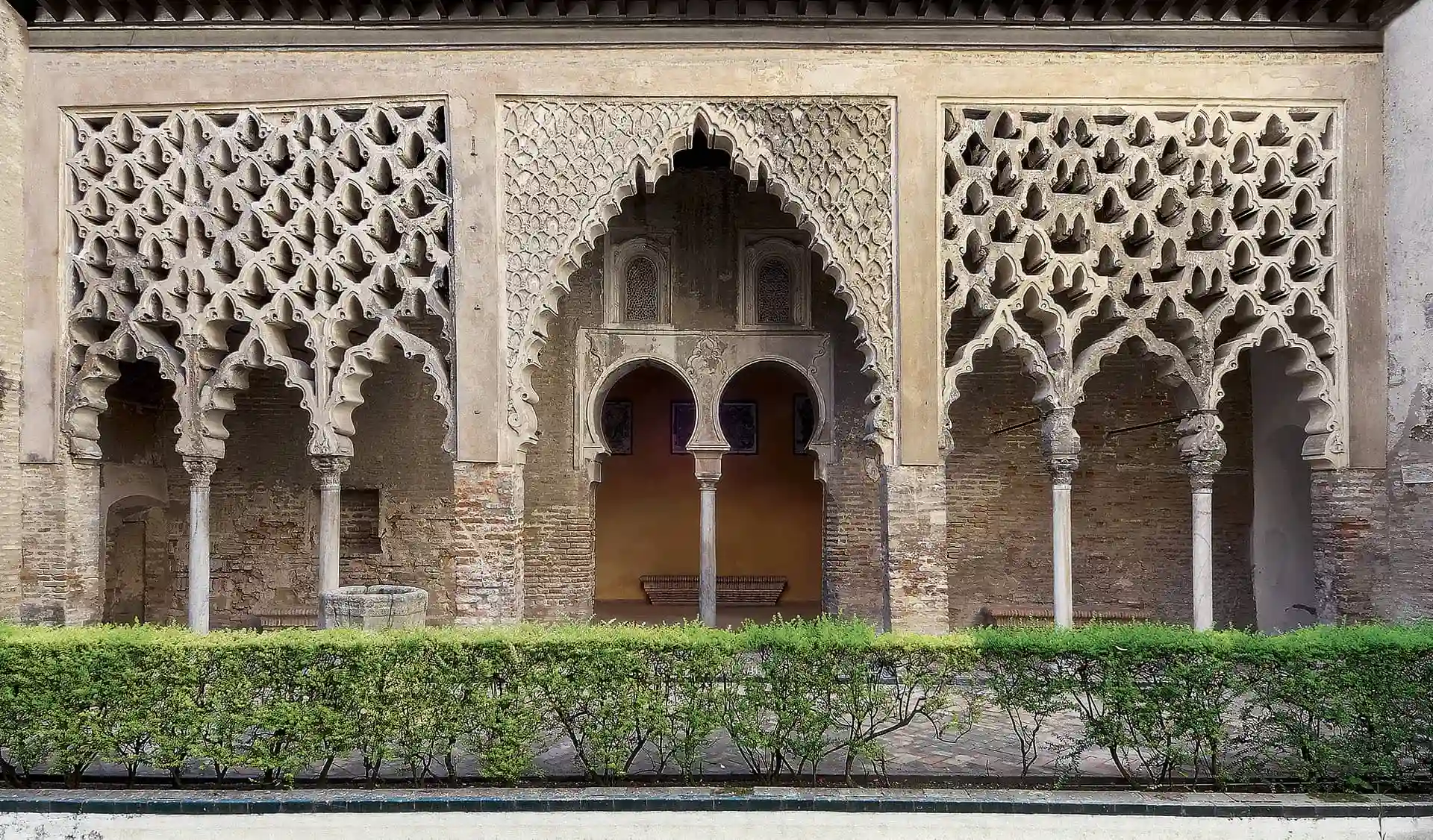
The exterior beauty is matched by the interior, with its stunning gardens, fountains, ponds, and even an ancient irrigation system from the Arab period.
Architecture of the Alcázar of Seville
With so many buildings constructed over centuries, we are lucky to witness a wide variety of architectural styles within the Royal Alcázar of Seville, including Mudejar, Gothic, and Renaissance.
A study conducted in 2009 revealed that the outer wall of the Royal Alcázar of Seville dates from the 11th century, that is, from the time of the Taifa of Seville. Although Roman remains from the 2nd century have been found four meters underground, scholars usually refer to the still-standing structures to distinguish the different architectural styles and eras.
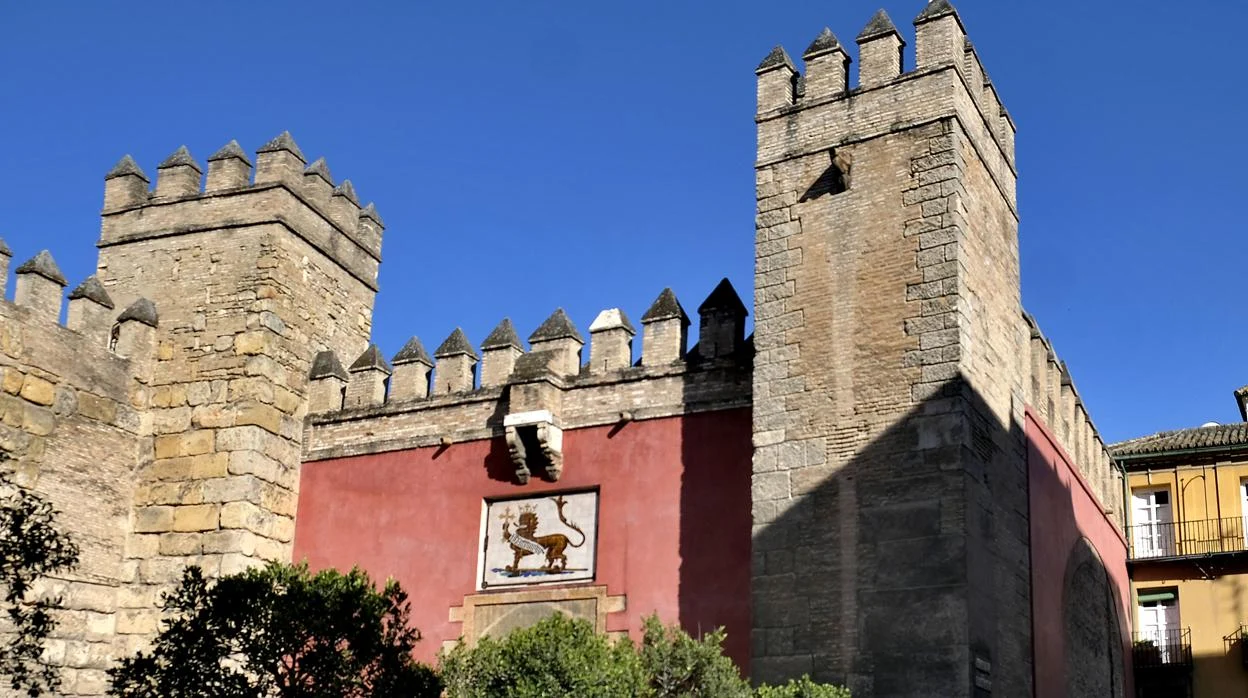
Briefly dissecting the architectural styles present in the Royal Alcázar of Seville, we can start with the Nasrid style, seen in the reconfiguration of its walls and floor plans.
The richness of decoration, with masterful plasterwork, plant motifs, and interlaced arches, is also prominent. A representative example of this period and style is the famous Patio de las Doncellas.
The Gothic-Mudejar style can be seen mainly in the combination of Mudejar structure with more Christian decoration—a true transitional period. Meanwhile, the Renaissance style is reflected in the simpler façades and more colorful courtyards.
Symmetry was introduced to the structures, giving a visually cleaner and more orderly appearance to the spaces and their elements. The arches and columns belong to the Renaissance period.
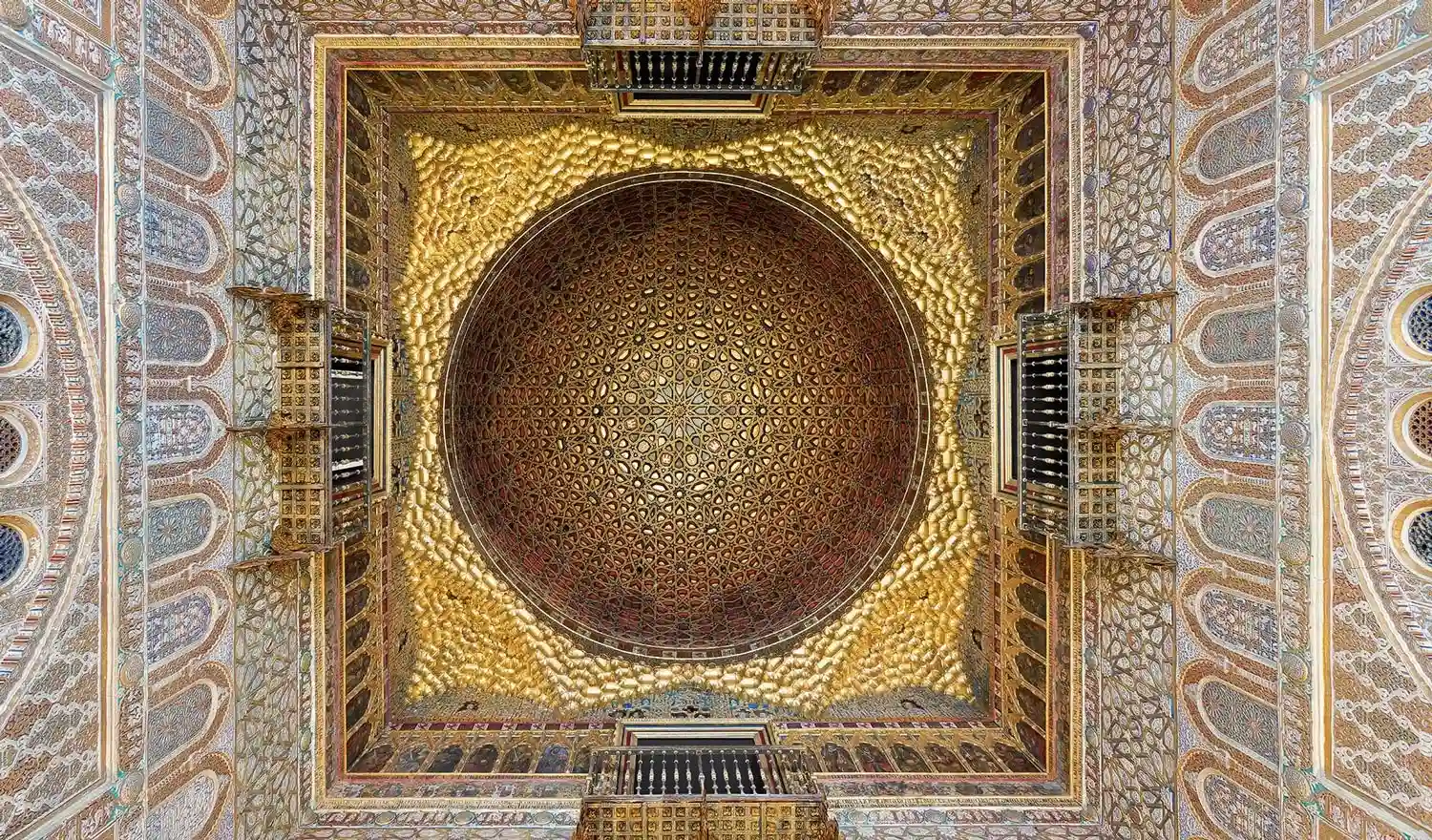
We then reach the Baroque style of the 17th century, where exuberance took center stage once again, bringing richness back to decoration. This can be seen in the plasterwork of the rooms and in the lush interior courtyards filled with vegetation.
The courtyards form a fundamental part of the Royal Alcázar of Seville, and while you should explore the entire Royal Alcázar of Seville, these are the patios you must not miss, especially if time is limited:
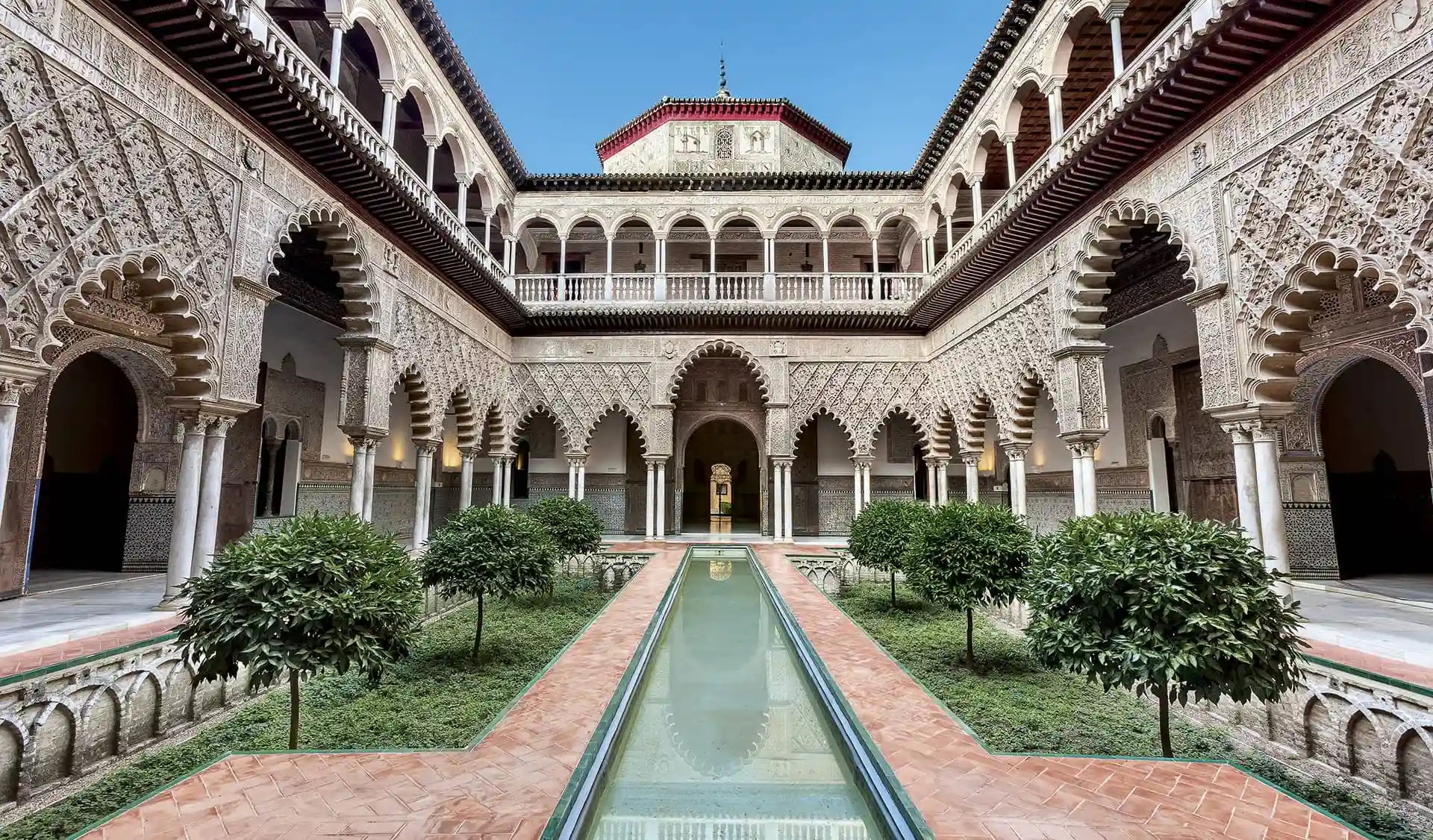
The Patio de las Doncellas is the most important and perhaps the most iconic of the Royal Alcázar of Seville. With a central pool and arcaded galleries around it, its significance lies in being a great example of the transition between Arabic and Christian influences. Another clear example of fusion and balance of styles can be seen in the Patio de las Penas.
The Patio de las Muertes, also known as the Patio of Constitutions, represents the arrival of Christian influence, contrasting sharply with the Arabic spatial layout, which can be seen in the Patio del Yeso, richly decorated with exquisite plasterwork demonstrating true mastery in the art of decoration.
The Patio de las Aguas is another must-see stop on your visit, with its beautiful channels, fountains, and the use of water as a decorative element.
Curiosities about the Alcázar of Seville
There are many curiosities, stories, and legends surrounding the Royal Alcázar of Seville. Among the most popular is the tale of secret passageways connecting the king’s chambers with the outside world, allowing escape in times of danger.

Another legend says that the blood of King Peter I the Cruel’s brother stained the marble of the Royal Alcázar of Seville for years. It is said that the king killed his own brother after discovering that he was secretly meeting with his wife, Doña Blanca de Borbón.
The Royal Alcázar of Seville also became the home of House Martell in the acclaimed series Game of Thrones. Seville, and specifically the Royal Alcázar of Seville, represented the southernmost region of Westeros, known as Dorne.
Visiting the Alcázar of Seville
If you want to make the most of your visit to the Royal Alcázar of Seville, don’t forget comfortable shoes, light clothing, and of course, book well in advance. Here we tell you everything about tickets and opening hours of the Royal Alcázar of Seville.
Tickets for the Alcázar of Seville
Get your tickets through the official website of the Royal Alcázar of Seville. Book as soon as possible, as temporary offers and promotions sell out quickly. Prices may also vary depending on the season.
A visit to the Royal Alcázar of Seville costs €15.50, while adding the Upper Royal Room increases the price to €21.
Opening hours of the Alcázar of Seville
The Royal Alcázar of Seville is open from October to March, inclusive, from 9:30 a.m. to 5:00 p.m. From April to September, inclusive, it extends its hours until 7:00 p.m.
Activities inside the Royal Alcázar of Seville
The “Naturaleza Encendida” light show
From October 30, 2025, to March 15, 2026, the third edition of “Naturaleza Encendida” will take place. A must-see event for those who have experienced it before and an exciting new adventure for first-time visitors.
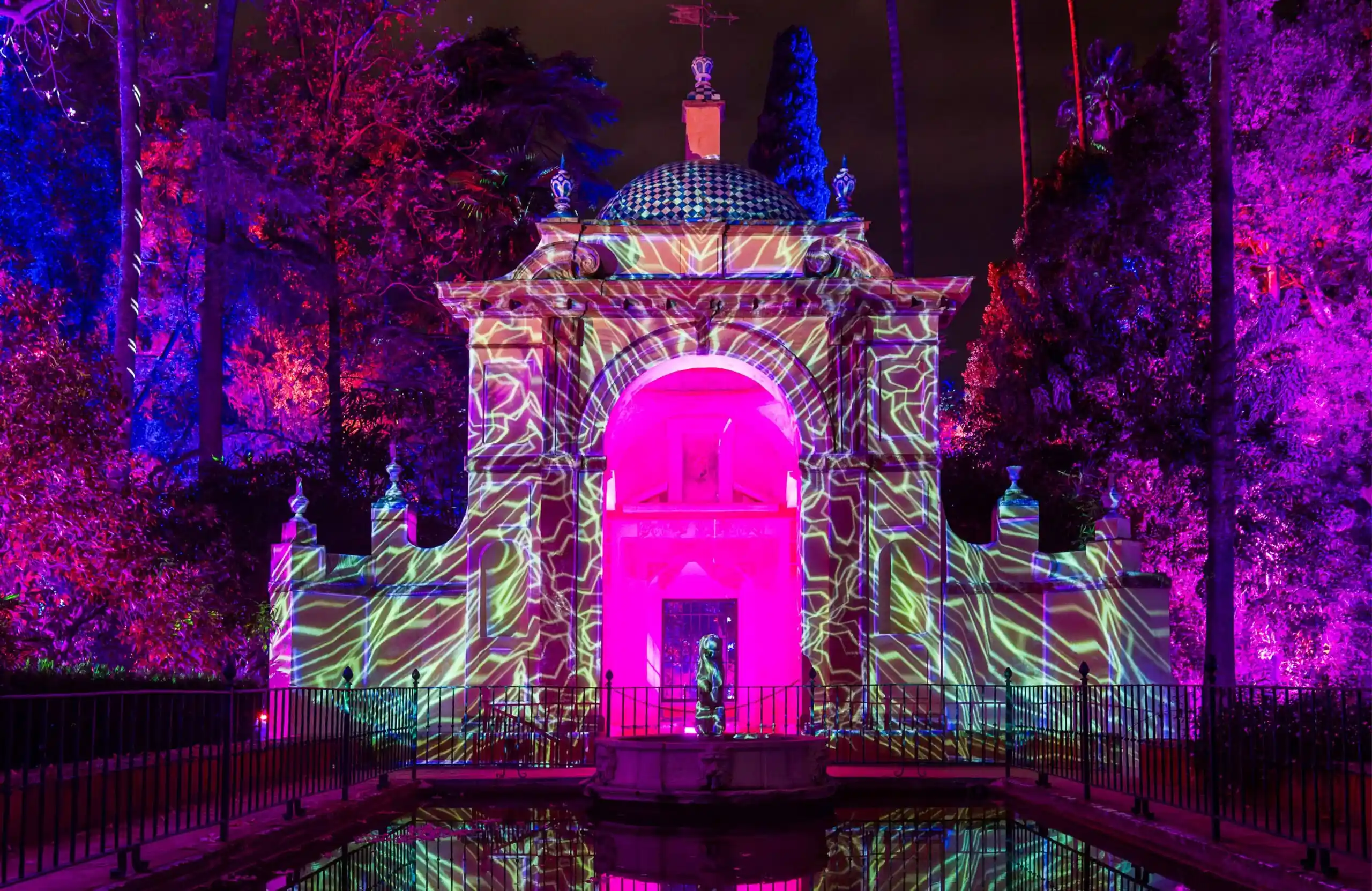
This light, projection, and sound show takes place in the gardens of the Royal Alcázar of Seville. This year’s theme is particularly special as it commemorates the 500th anniversary of the wedding of Charles V and Isabella of Portugal. The gardens are divided into seven zones that will make us dream and travel through time.
Concerts at the Alcázar of Seville
The concert series held at the Royal Alcázar of Seville explores the musical expressions that have flourished in Seville throughout its history. The program continues to grow with new dates and artists, so we recommend visiting the official website of the Royal Alcázar of Seville to stay up to date with this unique and special event.
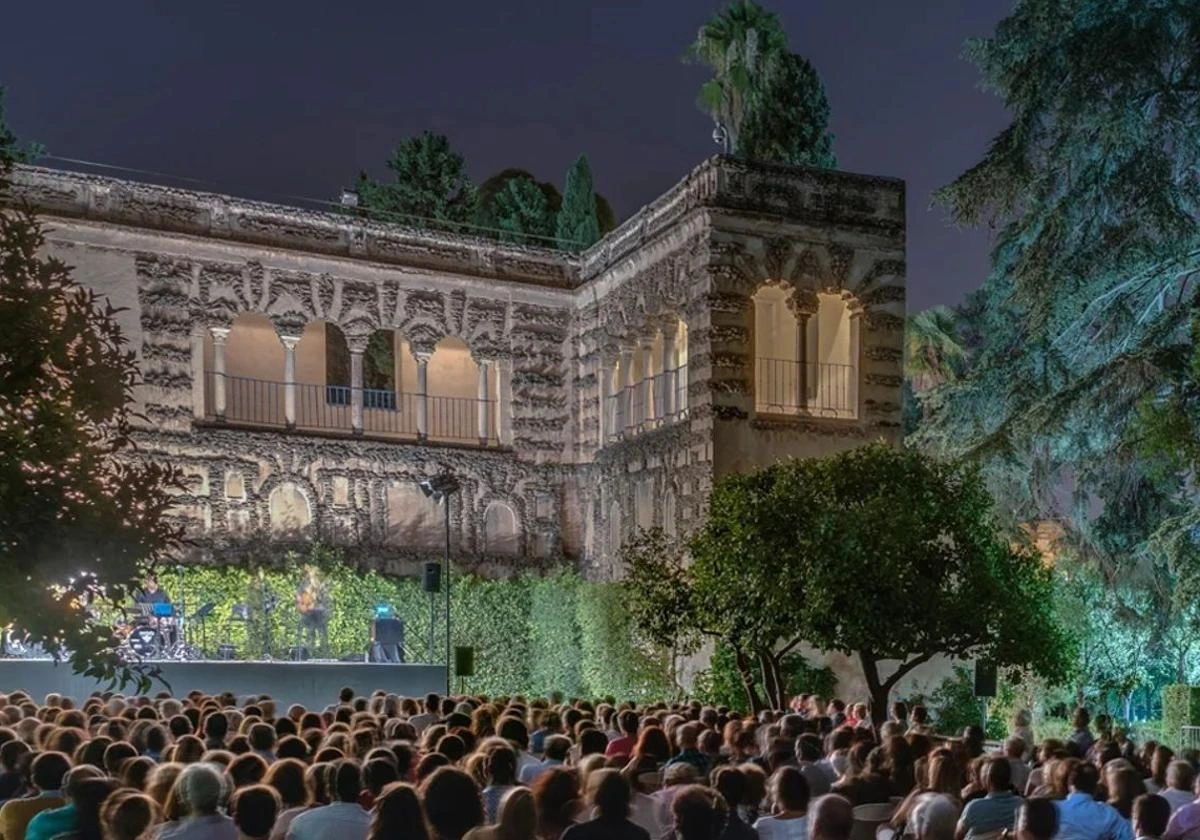
How to get to the Alcázar of Seville
By bus
We start from the Arrivals terminal (T3) of Malaga Airport, where buses depart every ten to fifteen minutes toward Malaga Bus Station. From there, an ALSA bus will take you on a trip of just over three hours to Seville Bus Station.
You can either walk for about 15 minutes to the Royal Alcázar of Seville or go to the Torneo stop at Plaza de Armas and take the C3 bus to Menéndez Pelayo, which is just a three-minute walk from the Royal Alcázar of Seville.
By car
It will take you just over two and a half hours to reach the Royal Alcázar of Seville from Malaga Airport. Take the A-7 until the signs direct you to merge onto the A-45 toward Córdoba/Seville.
Continue until you reach the SE-30, the metropolitan ring road of Seville. Follow the signs toward the city center. Once there, the Royal Alcázar of Seville is nearby. We recommend parking around Avenida de la Constitución or near the Torre del Oro.
Map of the Cathedral of Seville
You’ll find everything you need marked on this map so you don’t miss any detail of the wonderful city of Seville.



